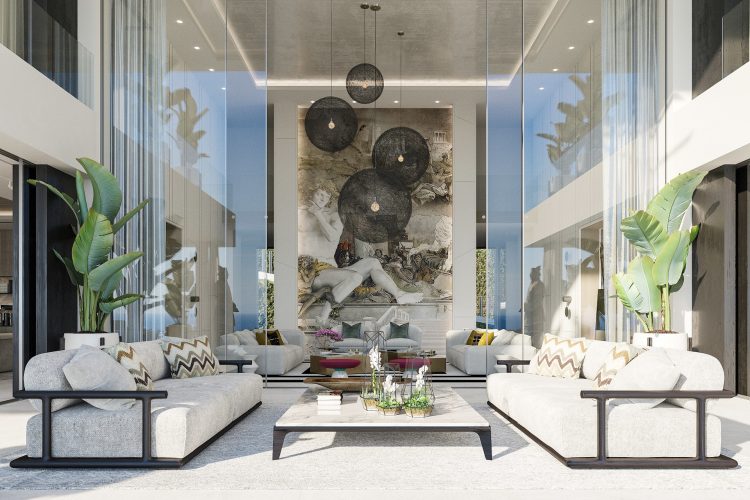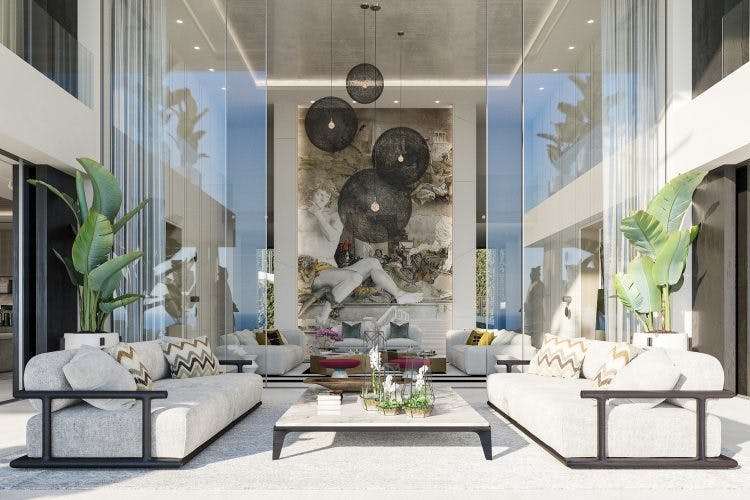An examination of the intersection of real estate and design

The Ancient Greeks were the first to link art and real estate. They believed that the placement of art within a home was a significant indicator of wealth and status, thus, their homes became overrun with sculptures and mosaics. These pieces were often commissioned by patrons who wanted to display their wealth and power.
During the Renaissance, wealthy patrons commissioned artists to create elaborate frescoes and murals on the walls and ceilings of their homes, many of which were designed to reflect the patron’s status. Artists such as Michelangelo and Leonardo da Vinci were able to create some of the most esteemed works of art in history thanks to the patronage of wealthy Italian families.
In the 19th and 20th centuries, art and real estate became even more closely linked. As the value of real estate began to rise, the value of art followed suit. Wealthy collectors began to buy art as an investment, and displayed their collections in elaborate homes and mansions. This practice is common today, with many high-end real estate listings featuring art collections to add value and prestige to the property.
As you can see, there’s a distinct relationship between real estate, and those who appreciate art and design. We know that art and unique configuration have the power to transform the energy of any space, and buyers appreciate the distinctive connection they feel viewing a well staged and decorated home. These traits help them to imagine themselves living there, and envision their day to day. Carefully curated art also has the power to help people connect with the home on an emotional level.
After the conception and popularity of home staging in the 1970’s, a strong focus on design and aesthetics has become a must in the real estate industry. The practice of home staging was first introduced by Barb Schwartz, a real estate entrepreneur in the United States. She identified the need to present her client’s homes in a more attractive and depersonalized way to draw more prospective buyers to her listings, and sell them at a faster rate. Her concept was revolutionary at the time, and her clients soon began to reap the benefits of her approach; homes that had been sitting on the market for months without any offers were selling within weeks after new aesthetic touches. Since its inception, home staging has become an integral part of the real estate industry, and is recognized to generate a higher sale price. A study by the National Association of Realtors found that staged homes sold for an average of 17% more than unstaged homes.
Art has also remained a key piece of the modern buying experience. Art creates a unique and memorable atmosphere, and well-placed piece can transform a space and invoke emotion. These pieces don’t have to be expensive or rare – art appeals to all demographics, and can create a holistic experience no matter the cost.
Commercial realtors have been using art in their branding strategies for some time now in to build a lasting impression of the brand, differentiate themselves from competitors, and create a sense of prestige and sophistication around their organization. Art is placed on display in a common area such as a lobby so all clients and visitors are immediately introduced to the tone of the brand, and gain a better understanding of the company’s personality.
Another way art is utilized in commercial real estate is by commissioning local artists to procure or create pieces specifically for the space in order to tell their brand story and project their vision. This also fosters connections within the local community.
If you need ideas for home staging and decorating but don’t know where to begin, check out this helpful article.



